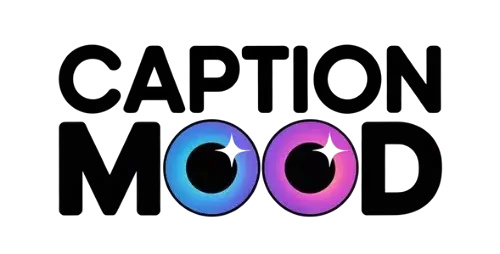A caption is a short piece of text that explains, describes, or adds context to images, videos, or social media posts. Understanding caption meaning, types of captions, and caption tips can help boost engagement, improve readability, and make your posts more shareable. Captions are essential for creating attention-grabbing social media content and connecting effectively with your audience.
What is a Caption for Instagram

A caption for Instagram is a short, descriptive text accompanying your photo or video that engages followers, adds context, or expresses emotion. Instagram captions can include hashtags, emojis, and call-to-actions, making your content more discoverable and interactive. A strong caption increases engagement, encourages likes and comments, and makes your posts memorable.
Key Elements of an Instagram Caption:
| Element | Description | Example |
| Hook | First few words to grab attention | “When life gives you sunsets…” |
| Context | Explains the post | “…make it a memory to cherish” |
| Call-to-Action | Encourages interaction | “Tag your best friend!” |
| Hashtags | Improves discoverability | “#TravelGoals #SunsetVibes” |
| Emojis | Adds emotion and visual appeal | “🌅💖✨” |
What is a Caption Example
A caption example is a sample of how text can accompany an image, video, or post to communicate meaning or engage the audience. Captions can be funny, flirty, bold, inspirational, or informative depending on your content style.
Examples of Captions:
| Type | Example |
| Funny | “Oops… I did it again 😜” |
| Inspirational | “Chase your dreams, not likes ✨” |
| Bold/Flirty | “Confidence looks this good 😏” |
| Informative | “5 tips to grow your Instagram fast 📈” |
What is a Social Media Caption
A social media caption is text that accompanies posts across platforms like Instagram, Facebook, Twitter, or TikTok. Its main purpose is to engage followers, provide context, and encourage interaction. Social media captions often use LSI keywords like hashtags, trending phrases, and emojis to maximize reach and discoverability.
Tips for Effective Social Media Captions:
- Keep it concise and clear
- Add humor or personality
- Include relevant hashtags
- Use call-to-action phrases
- Incorporate trending LSI keywords
What is a Caption on Instagram
An Instagram caption is much more than just a description under a photo or video; it’s a strategic tool to connect with your audience, tell your story, and boost engagement. Captions can range from witty one-liners to long storytelling posts that resonate emotionally with followers.
Using hashtags, mentions, and emojis in captions increases discoverability and helps your posts reach a wider audience via the Explore page.
Effective Instagram captions also include calls-to-action, like asking followers to comment, tag friends, or save posts, which encourages interaction and algorithmic reach. In 2025, Instagram captions are essential for brands, influencers, and creators to drive engagement, build communities, and showcase authenticity.
What is a Caption on TikTok
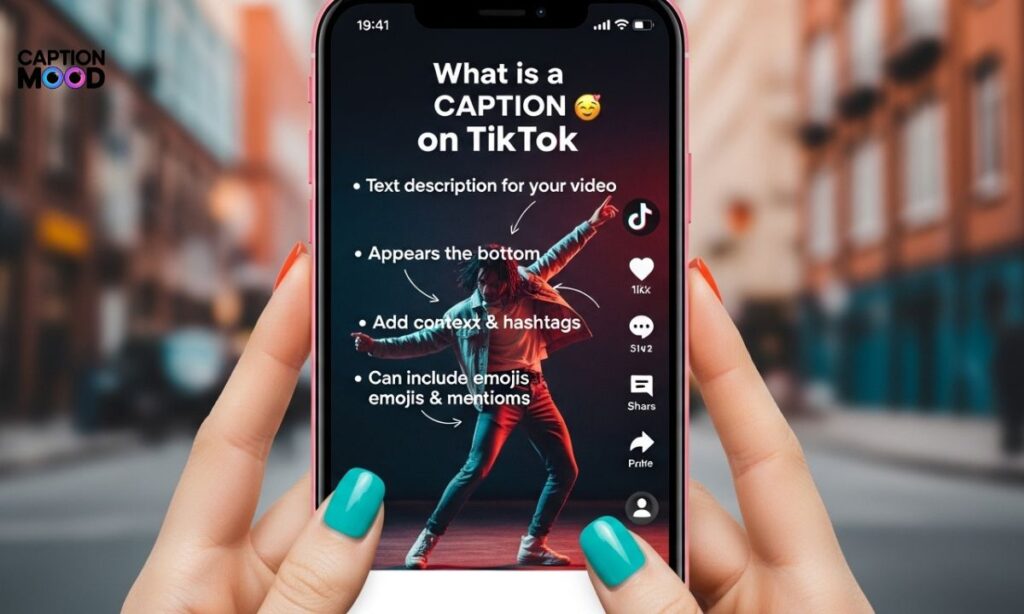
On TikTok, captions are short, punchy text overlays or video descriptions that add context, humor, or storytelling to your videos. Captions are key to capturing attention in the first few seconds, encouraging users to watch, like, comment, or share.
Integrating trending hashtags, challenges, or questions in captions increases your chances of going viral and appearing on the For You Page (FYP).
Unlike other platforms, TikTok captions are optimized for mobile-first audiences, so clarity and impact matter more than length. Strong captions also improve accessibility, helping viewers understand content even without sound, making them critical for reach, engagement, and virality
Story Captions
Story captions are short, engaging texts added to ephemeral content on platforms like Instagram, Facebook, and Snapchat. They provide context, share emotions, or drive immediate action. Adding interactive elements like polls, questions, stickers, and hashtags can increase engagement and encourage your audience to respond instantly.
Unlike feed posts, story captions are temporary but highly impactful, allowing brands and creators to highlight behind-the-scenes moments, limited offers, or personal updates. A compelling story caption captures attention quickly, makes content more memorable, and strengthens the connection between you and your audience.
Caption Call
CaptionCall is a real-time phone captioning service designed for people with hearing difficulties. It instantly transcribes spoken words into readable text, allowing users to follow conversations effortlessly.
Available for both landlines and smartphones, CaptionCall enhances accessibility and inclusivity, ensuring no information is missed during calls.
While not a social media tool, CaptionCall highlights the power of captions in communication, showing how real-time text can improve comprehension, engagement, and user experience.
It demonstrates that captions aren’t just for social media they’re a vital tool for making digital communication inclusive for everyone.
What is a Caption on Facebook
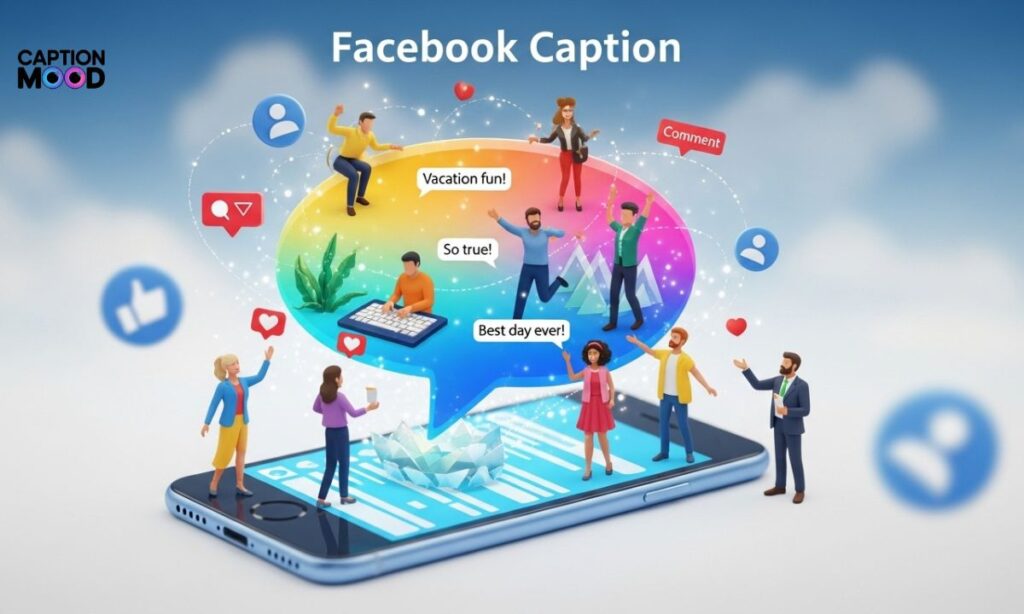
A Facebook caption is the text you write under a post, photo, video, or link to explain, entertain, or engage your audience. Captions help tell stories, share insights, and spark reactions, comments, and shares, which directly impacts your Facebook algorithm visibility. Including hashtags, mentions, and emojis makes your posts more discoverable and relatable.
In 2025, Facebook captions are used strategically by brands, creators, and communities to boost engagement, communicate value, and drive traffic. A well-crafted caption turns simple posts into shareable, memorable, and high-performing content that connects with followers on a personal level.
What is a Caption on YouTube
A YouTube caption is the text that appears on-screen during a video, helping viewers understand the content, follow along, or access it in noisy environments. Captions improve accessibility, audience retention, and SEO, as YouTube indexes captions for search.
Advanced tip: use accurate transcripts, keyword-rich captions, and timestamps to enhance search visibility. For example, a cooking channel might caption: “Add 2 cups of flour and mix until smooth” to ensure viewers follow along, and YouTube recognizes the keywords for search.
Creators should also enable automatic captions and manually edit them for accuracy. YouTube captions not only help those with hearing difficulties but also boost engagement, watch time, and discoverability across global audiences.
What is a Caption in a Video
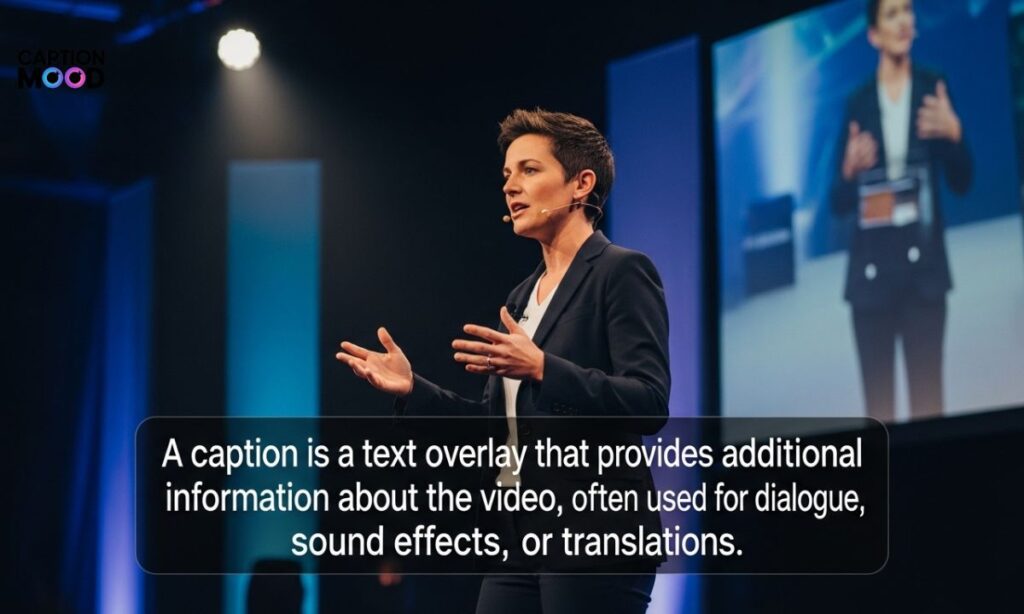
A video caption is any text overlay that provides context, dialogue, or commentary on your content, whether for social media, marketing, or entertainment. Captions increase retention and engagement because most users watch videos on mute. Advanced tips:
- Use concise, readable text that matches the pacing of the video.
- Highlight key points or quotes to emphasize important moments.
- Incorporate emojis or call-to-actions for engagement.
- Add branding or hashtags subtly in captions to reinforce your message.
Example: In a fitness video, captioning “Hold plank for 30 seconds 💪” keeps viewers engaged and provides actionable instructions. Video captions are essential for social media algorithms, accessibility, and international audiences, ensuring your content reaches more viewers.
What is a Caption for Family
A family caption is the text you use to describe family photos or videos on social media. These captions highlight love, connection, humor, and memories. Advanced tips:
- Combine emotion and storytelling: “Family dinners, laughter that echoes forever 💕.”
- Use funny or relatable lines to increase shares: “Chaos, hugs, and endless snacks 🍪.”
- Include mentions or tags for engagement.
- Incorporate seasonal or event-based hashtags: #FamilyTime, #SiblingGoals.
Example: For a birthday photo, a caption could be: “Celebrating life with the people who make every day brighter 🎉”. Family captions enhance emotional connection and make content shareable, memorable, and heartwarming, which drives engagement on Instagram, Facebook, or WhatsApp.
What is a Caption on Instagram Story
Instagram Story captions are short texts added to ephemeral story content to provide context, humor, or calls-to-action. They play a crucial role in engaging your audience quickly because stories disappear in 24 hours. Advanced tips:
- Use interactive stickers like polls, quizzes, or sliders to boost engagement.
- Keep captions concise and attention-grabbing for mobile viewers.
- Integrate hashtags and location tags for discoverability.
- Mix bold text, emojis, and GIFs to make your story visually appealing.
Example: A travel story caption could be: “Chasing sunsets and memories 🌅 #Wanderlust”. Story captions encourage immediate reactions, replies, and shares, making them essential for real-time engagement and growing your follower base.
What is a Caption for an Image

A caption for an image is the text that accompanies a photo or graphic on social media, blogs, or websites to provide context, storytelling, or emotional connection. Captions help your audience understand the image, engage with it, and remember it longer. They are crucial for enhancing content discoverability because search engines index image captions alongside the visual content.
Advanced tips:
- Describe the scene or moment clearly: “Sunset over the mountains, painting the sky in gold 🌄.”
- Add storytelling elements to make the image relatable: “A quiet morning coffee, my little daily escape ☕.”
- Include keywords naturally for SEO, e.g., “Spring garden blooms in full color” for travel or lifestyle posts.
- Incorporate calls-to-action like “Tag someone who needs to see this!” to boost engagement.
- Use emojis strategically to convey emotion or highlight key points without cluttering the text.
- Keep it concise but compelling, balancing readability with impact.
- Highlight people, places, or events to create a narrative for your audience.
- Align the caption tone with your brand or personal voice—fun, inspirational, or informative.
- Test different caption lengths to see which style resonates best with your followers.
- Pair captions with hashtags or mentions to increase discoverability and social interaction.
Example: For a travel photo, the caption could be: “Lost in the winding streets of Venice, every corner tells a story 🌊 #TravelDiaries #VeniceVibes”.
A strong image caption not only adds context but also drives engagement, emotional connection, and SEO value, making it an essential element of effective visual content.
What is a Caption in a Book
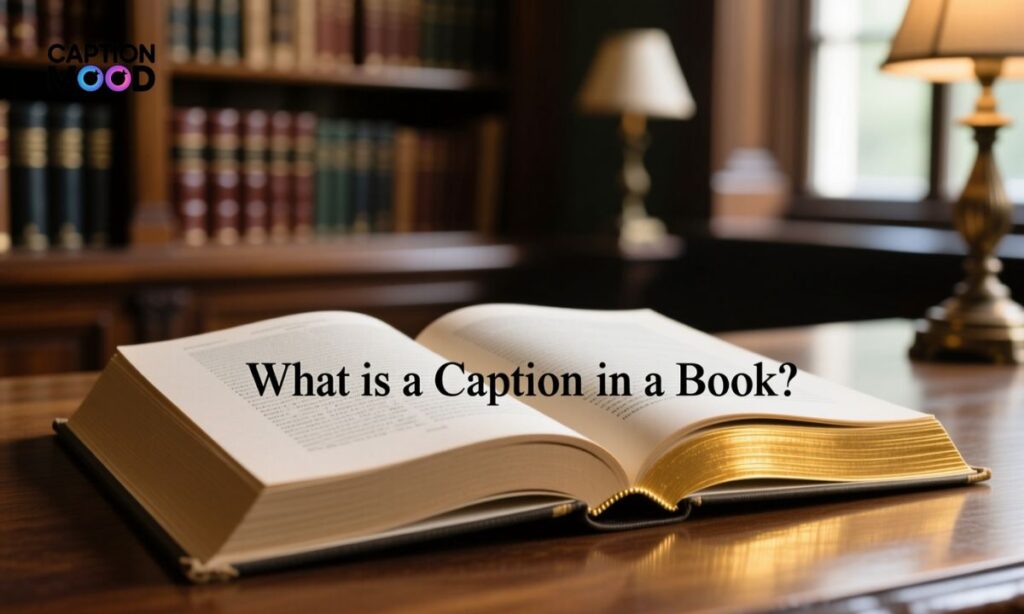
A caption in a book is a brief explanation or description accompanying an illustration, diagram, or photo. It provides clarity and context, helping readers understand visual content without breaking the flow of the text. Captions in books can also include sources, author notes, or additional insights.
Example Table of Book Captions:
| Image/Diagram | Caption Example | Purpose |
| Historical Photo | “The signing of the Declaration of Independence, 1776” | Provides historical context |
| Science Diagram | “The water cycle illustrating evaporation and precipitation” | Explains the process |
| Illustration | “Character sketches for Chapter 3” | Supports narrative understanding |
What is a Caption in Writing
A caption in writing is a short, descriptive text that accompanies illustrations, images, or charts to provide clarity and context. It helps readers understand the purpose or meaning of the visual content without interrupting the flow of the main text. In writing, captions can also enhance storytelling, add humor, or provide important information.
Key Uses of Captions in Writing:
| Type | Purpose | Example |
| Descriptive | Explains image or chart | “Graph showing population growth over 10 years” |
| Informative | Adds extra data | “Average rainfall in different regions” |
| Humorous | Engages reader | “When your cat takes over your workspace 😹” |
| Narrative | Enhances story | “The hero arriving at the mysterious castle” |
What is a Caption for a Picture
A caption for a picture is a brief text that describes, explains, or adds context to an image. Picture captions are used in books, magazines, social media, and blogs to provide clarity and attract attention. Effective picture captions often use keywords, emotions, and storytelling elements to make visuals more engaging.
Picture Caption Examples:
| Image Type | Caption Example | Purpose |
| Travel Photo | “Sunset at Bali beach, the perfect evening” | Descriptive and engaging |
| Food Photo | “Chocolate cake topped with fresh strawberries” | Enticing and informative |
| Historical Image | “First moon landing, July 1969” | Provides context and historical info |
| Social Media Post | “Weekend vibes with friends 😎” | Fun and shareable |
Caption Meaning in Hindi
The meaning of caption in Hindi is “चित्र या छवि के नीचे लिखी हुई व्याख्यात्मक पंक्ति”, जिसका उद्देश्य चित्र, फ़ोटो, या चार्ट के बारे में जानकारी देना और पाठक को समझाना है। Captions in Hindi are commonly used in books, newspapers, social media, and magazines for clarity and engagement.
Examples of Hindi Captions:
| Image Type | Hindi Caption Example | English Translation |
| Travel Photo | “सुंदर समुद्र तट पर सूर्यास्त” | “Sunset at a beautiful beach” |
| Food Photo | “ताज़ी स्ट्रॉबेरी के साथ चॉकलेट केक” | “Chocolate cake with fresh strawberries” |
| Historical Image | “पहली चाँद की यात्रा, जुलाई 1969” | “First moon landing, July 1969” |
What Does Caption Mean
A caption means a short piece of text that accompanies an image, illustration, chart, or social media post to describe, explain, or enhance understanding. Captions are used across books, articles, Instagram, Facebook, and blogs to make content more informative, engaging, and shareable.
Key Points About Captions:
| Aspect | Explanation |
| Purpose | Provide context or explanation for visual content |
| Length | Usually short and concise (1–3 lines) |
| Platforms | Books, magazines, social media, websites |
| Elements | Can include humor, emotion, keywords, hashtags |
| Benefit | Improves readability, engagement, and attention |
What is a Caption for Kids
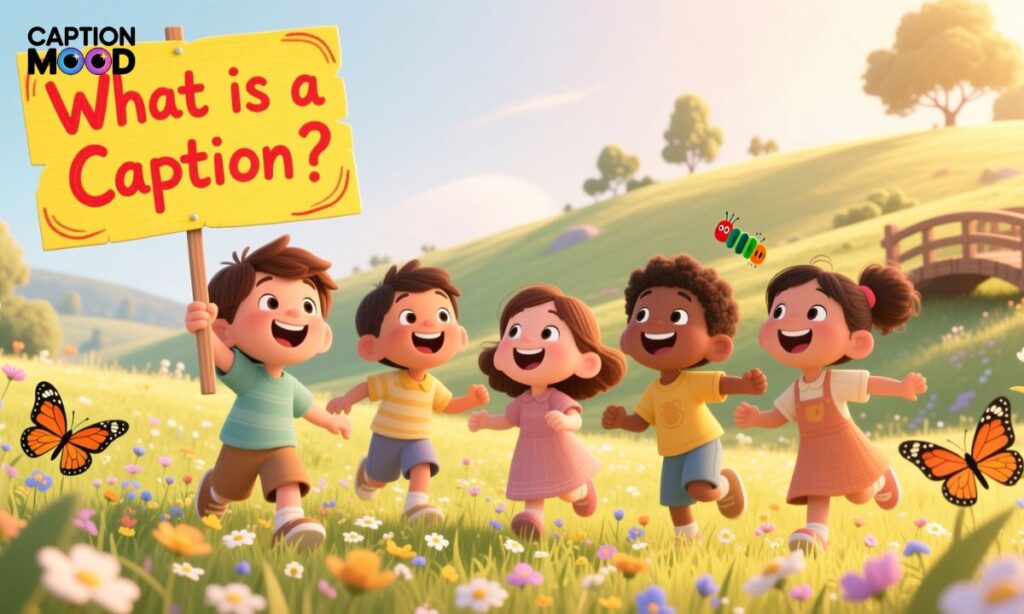
A caption for kids is a simple, clear, and engaging line of text that explains an image, illustration, or educational content in a way children can easily understand. These captions often use simple language, fun words, and relatable examples to enhance learning and comprehension.
Examples of Captions for Kids:
| Image Type | Caption Example | Purpose |
| Animal Photo | “The lion is the king of the jungle” | Educational and descriptive |
| Cartoon Image | “Mickey Mouse loves to play with friends” | Fun and relatable |
| Science Diagram | “Water changes into ice when it gets cold” | Explains concepts simply |
| Story Illustration | “The little rabbit hops to find food” | Supports storytelling |
What is a Caption in English
A caption in English is a brief explanatory text accompanying an image, video, or chart. It is used to clarify content, provide context, or add meaning. English captions are widely used in social media, books, articles, and blogs, and can be informative, funny, or creative.
Elements of an English Caption:
| Element | Description | Example |
| Context | Explains the image | “Sunset over the mountains” |
| Emotion | Adds feeling | “Feeling the calm of nature” |
| Call-to-Action | Encourages engagement | “Share your favorite sunset moment!” |
| Keywords | Improves discoverability | “Nature photography, scenic views” |
The Origin and Evolution of Captions
Captions originated as short descriptive texts in newspapers and books to provide context for images or illustrations. Over time, their use evolved across magazines, television, and digital platforms. Today, captions are essential for social media posts, videos, and online content, combining description, emotion, and engagement.
Timeline of Caption Evolution:
| Era | Platform | Purpose |
| Early 1900s | Newspapers & Books | Describe images, explain events |
| Mid 1900s | Magazines & TV | Enhance storytelling, aid comprehension |
| 2000s | Social Media & Blogs | Engage audience, increase shareability |
| 2020s | Instagram, TikTok, YouTube | Combine hashtags, emojis, and call-to-action for maximum reach |
The Diverse Uses of Captions
Captions serve multiple purposes across different mediums. They can inform, entertain, or engage audiences, depending on the context. Common uses include:
| Use | Description | Example |
| Educational | Explaining diagrams or concepts | “Photosynthesis converts sunlight into energy” |
| Social Media | Boosting engagement and discoverability | “Weekend vibes with friends 😎 #FunTimes” |
| Books & Articles | Clarifying images and illustrations | “The Roman Colosseum, built in 80 AD” |
| Marketing | Promoting products and brands | “New collection launching today! #ShopNow” |
| Accessibility | Helping visually impaired readers | Closed captions on videos |
How to Create Engaging Captions
Creating engaging captions requires clarity, creativity, and relevance. Effective captions combine LSI/NLP keywords, hashtags, emojis, and call-to-action phrases to attract attention and drive interaction.
Steps to Create Engaging Captions:
| Step | Tip | Example |
| Know Your Audience | Tailor captions to your followers | “Travel lovers, tag your adventure buddy!” |
| Keep It Short & Clear | Use concise, readable sentences | “Sunsets like this are pure magic” |
| Add Emojis | Make captions visually appealing | “Beach day vibes 🌊☀️🏖️” |
| Include Hashtags | Improve discoverability | “#TravelGoals #BeachVibes” |
| Use Call-to-Action | Encourage likes, comments, shares | “Comment your favorite travel spot!” |
| Inject Personality | Show humor, boldness, or emotion | “Coffee first, adulting later ☕😜” |
Frequently Asked Questions
What is a caption in social media?
A caption in social media is a short text accompanying images or videos that engages followers, adds context, and improves post visibility.
How do captions enhance Instagram posts?
Captions enhance Instagram posts by providing context, including hashtags, call-to-actions, and keywords to boost engagement and discoverability.
What is a caption in writing?
In writing, a caption is a brief description under images, diagrams, or charts to clarify meaning and support the main text.
Can captions be educational?
Yes, captions can be educational by explaining visuals, simplifying complex ideas, or highlighting important information.
What is a picture caption?
A picture caption is text that describes, explains, or adds context to a photograph or illustration for clarity and engagement.
How long should a caption be?
Captions should be concise, usually 1–3 sentences, making them easy to read and effective for social media or publications.
What is the difference between captions and titles?
Captions describe or explain visuals, while titles summarize or name the content; captions provide context, titles provide identification.
Where are captions commonly used?
Captions are commonly used in books, magazines, social media, blogs, and videos to improve understanding and audience engagement.
Conclusion
In conclusion, a caption is a versatile and essential tool across social media, writing, books, and visual content. It provides context, clarifies meaning, and engages audiences effectively. By understanding the types, purposes, and best practices for captions, you can create content that is informative, attention-grabbing, and shareable, enhancing both readability and audience interaction.

Hi, I’m Emily Carter, the mind and heart behind CaptionMood — a creative space designed to help you express your thoughts with the perfect words.
As a writer and digital content enthusiast, I’ve always believed that captions are more than just text; they’re emotions, stories, and reflections of who we are. With CaptionMood, my mission is to provide unique and engaging Mood Captions, Occasion Captions, and Social Media Captions that resonate with people from all walks of life.
Thank you for visiting and being part of this journey. Through CaptionMood, I hope to inspire, connect, and make every post more meaningful.
